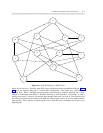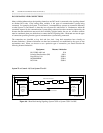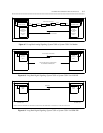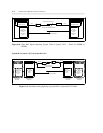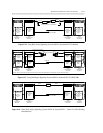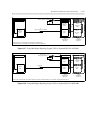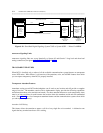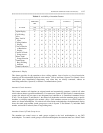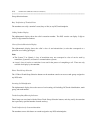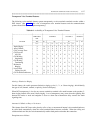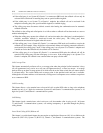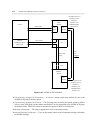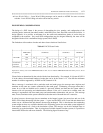DISTRIBUTED COMMUNICATIONS SYSTEM (DCS) 6-15
_ ______________________________________________________________________________________
_ ______________________________________________________________________________________
_ ______________________________________________________________________________________
Table 6-3. Availability of Attendant Features
_ _______________________________________________________________________________
DIMENSION SYSTEM 85 SYSTEM 75 DEFINITY
PBX
_ _____________________________________________________________
FEATURE FP8 R1 R2 R1 G1 G2
_ ___________________________________________________
Iss 3 - V1 V2 V3 V4 V1 V2 V3
_ _______________________________________________________________________________
Alpha Display Y N Y Y Y Y N Y Y Y Y
Call Waiting Y N Y Y Y Y N Y Y Y Y
ACA Y N Y Y Y Y N Y Y Y Y
Busy Verif of
Lines Y N Y Y Y Y N Y Y Y Y
Calling Number
Display Y N Y Y Y Y N Y Y Y Y
Class-of-Service
or Restriction
Display Y N Y Y Y Y N Y Y Y Y
Control of Trunk
Group Access Y N Y Y Y Y N Y Y Y Y
Direct Trunk
Group Selection Y N Y Y Y Y N Y Y Y Y
Trunk Group
Busy Warning
Indicator Y N Y Y Y Y N Y Y Y Y
Trunk Verification Y N Y Y Y Y N Y Y Y Y
_ _______________________________________________________________________________
Alphanumeric Display
This feature provides for the attendant to have calling number, class-of-service or class-of-restriction,
incoming call ID, and trunk ID displayed at the console. Calls to and from a System 75 or Generic 1 have
calling/called party identification transparency only when they are directly connected, without an
intervening DIMENSION, System 85, or Generic 2 communications system.
Automatic Circuit Assurance
This feature monitors call durations on assigned trunks and automatically generates a referral call when
switch software detects a possible malfunction. For DIMENSION, System 85, and Generic 2 communications
systems, the referral call can route to one designated local attendant or to Centralized Attendant Service
(CAS). For the System 75 and Generic 1, the referral call destination can be the attendant group, a specific
attendant, or a display-equipped voice terminal. Only a CAS attendant can turn on or off this feature for
trunks at a distant node/endpoint. For referral calls from distant nodes/endpoints, the alphanumeric display
shows the trunk group number (trunk group access code in System 75 and Generic 1), individual trunk
number, and reason for referral (short or long holding time).
Attendant Control of Trunk Group Access
The attendant can control access to trunk groups assigned to the local node/endpoint or any DCS
node/endpoint. To control a trunk group at a distant node/endpoint, the attendant must use a Direct Trunk



